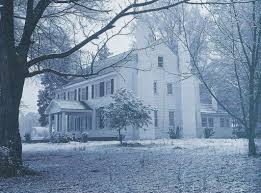Wakefield’s rich history is filled with colonization, war, and tales of generations of families making the small southern town their home. But it might be best known for its vast real estate and the people who owned it.
Most iconic and well known, the Wakefield Farm House was owned by David Gill III. His grandfather David Gill, purchased the property in 1784, but Gill III built the original manor home. He made his living as a salesman and distributor for adjacent farmers by driving their livestock and cotton to Petersburg, Virginia to sell.
Gill eventually sold his property to Brewer who sold it to John Sprunt, a banker who was the founder of Durham Bank Trust. The bank was later renamed Carolina Bank and is now known as Sun Trust. During his time as owner, Sprunt purchased nearly 2,000 acres along the Neuse River and the Horse and Richland Creeks near Wake Forest. During this time it was normal for men in the South who made their wealth through banking or farming to build a homefront or showplace to flaunt their wealth, which is exactly what Sprunt did.
Under Sprunt’s ownership, architect S.O. Rich was hired to design all the farm buildings on the property. The barn was built in 1934, boosting 8,000 square feet and a bell-shaped roof. The barn is still standing today.
The first floor was home to a herd of registered Guernsey cows that were housed and milked on the property. On the second-floor, grain was stored and the third-floor was for hay storage. The farm also housed 25 teams of Percheron work horses that were held in a separate barn. Also around this time, a bull barn and a maternity barn were constructed. Following Hill’s death in the early 1950’s the farm was sold to be used as a pension fund for KLM Dutch Airlines. Jim Goodnight then bought the land for $2 million, and finally Wakefield Developers bought the land for $10 million.
One of those developers, William Sutton purchased the 2,200 acres of land to build a large housing development that would be called Wakefield Estates. The community was purchased in the city that is now modern-day Wake Forest and remains there today. Currently Wakefield has over 12,000 households and a thriving commercial and retail center.


